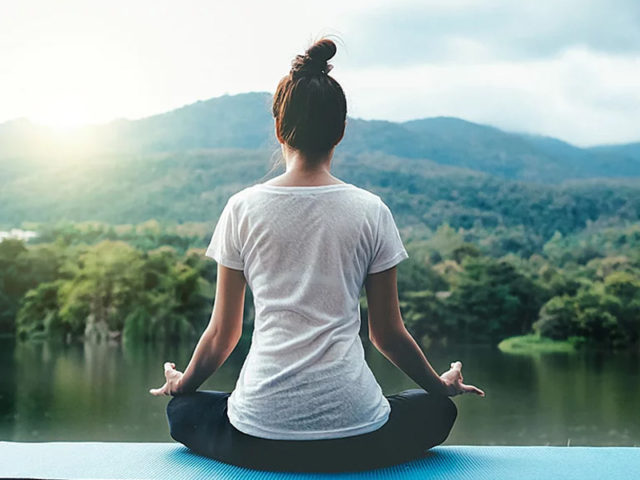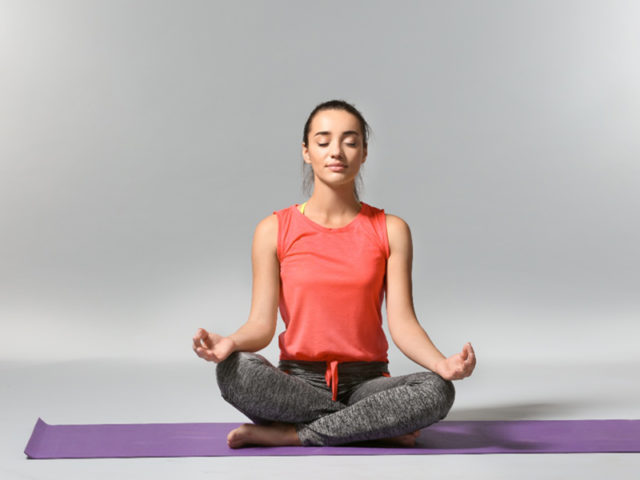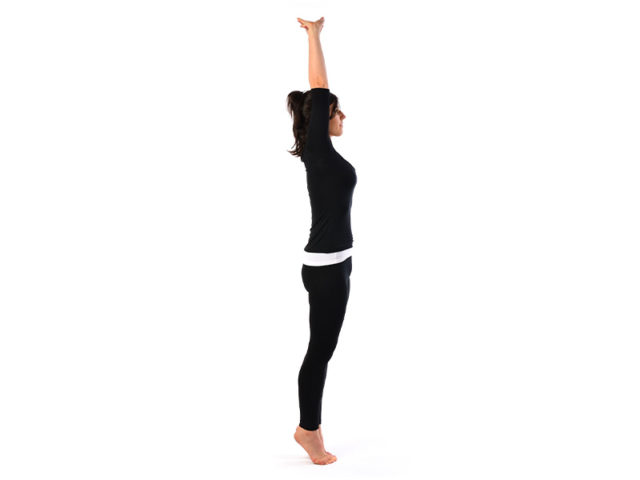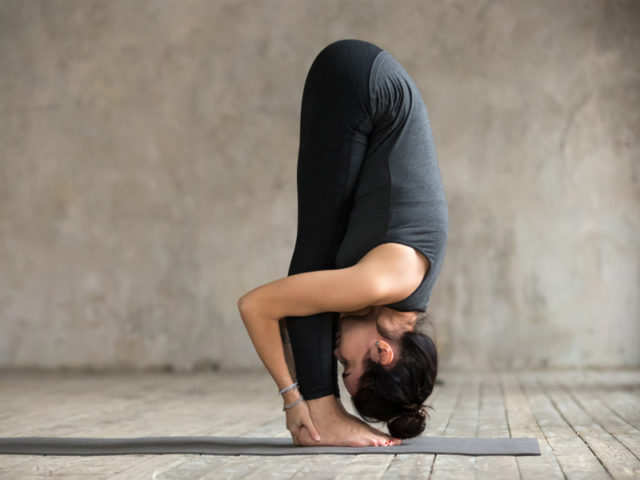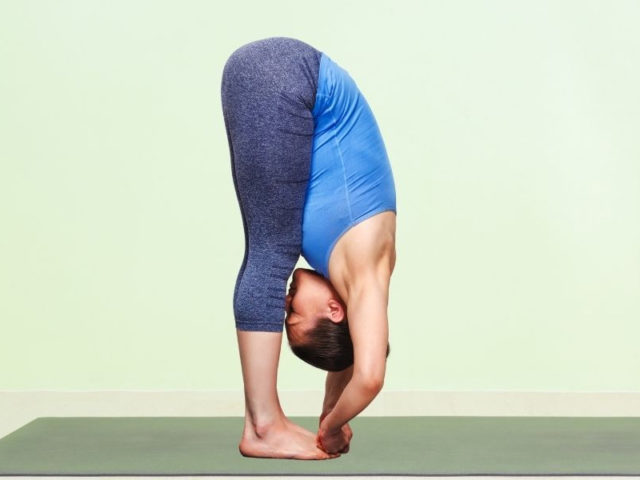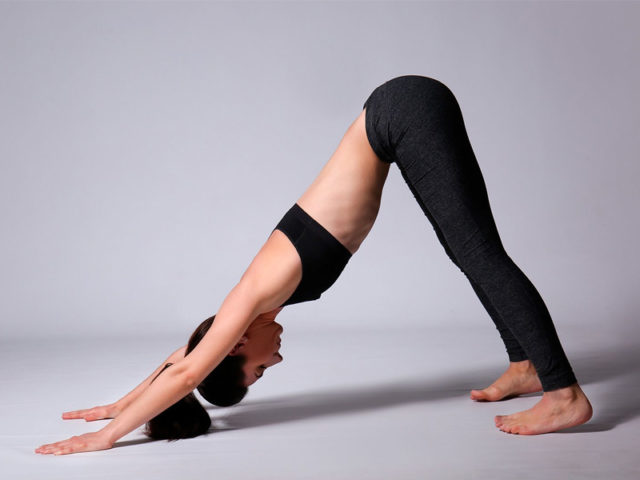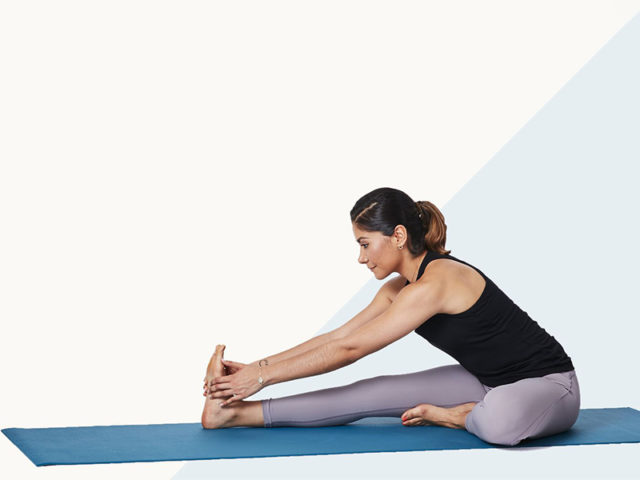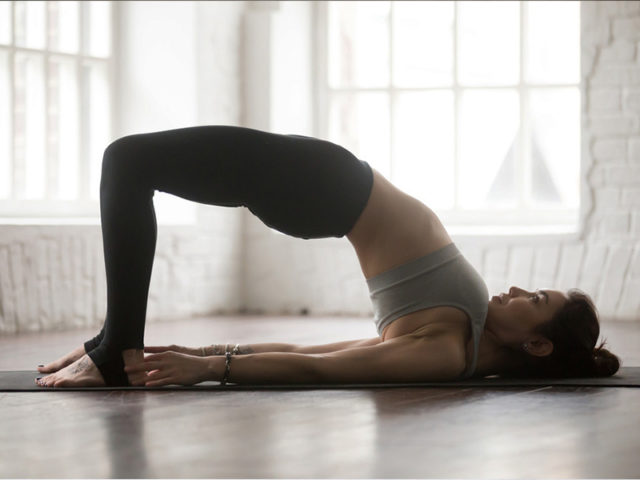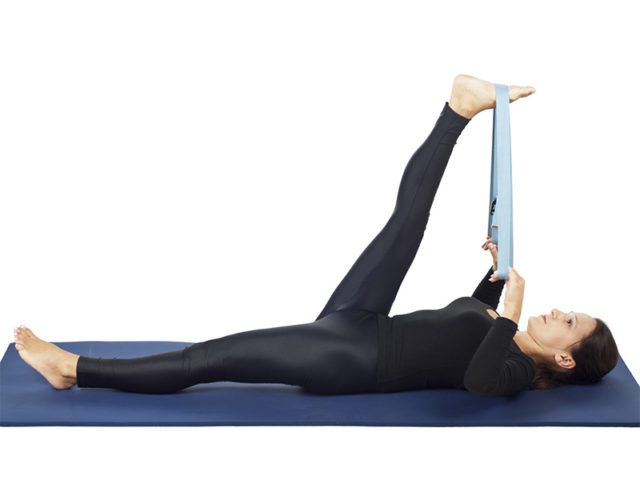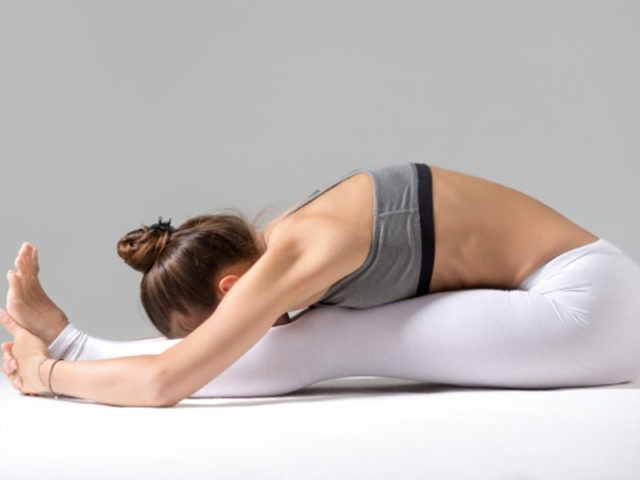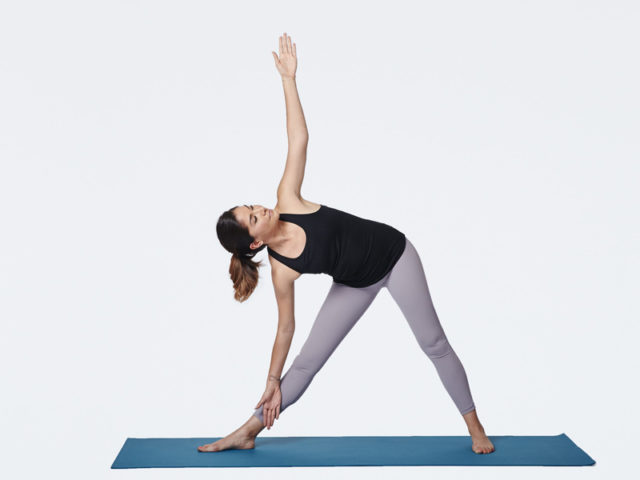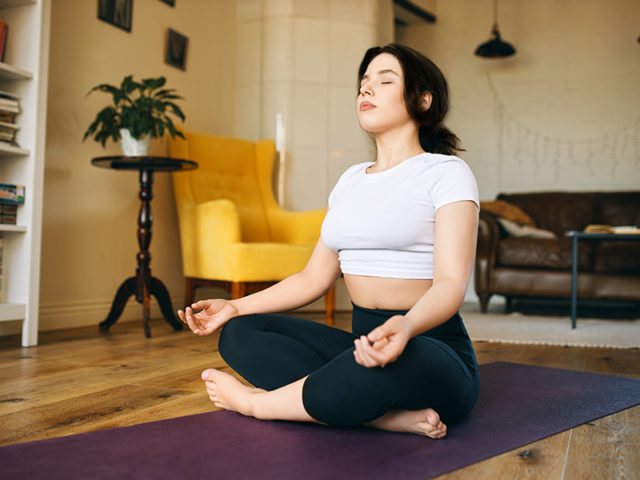Haryana BJP leader Sonali Phogat reportedly lost her life to a heart attack today, 23rd August 2022, at the young age of 42. The incident occured in Goa, where she is believed to have visited with some of her employees. After having complained of uneasiness on Monday night, she was taken to St Anthony Hospital at Anjuna in North Goa. However, the police have claimed that she was brought dead to the hospital. The conclusive evidence to the cause of her death can be determined by the results of a post-mortem, which is being conducted at the state-run Goa Medical College and Hospital, Bambolim.
Apart from being a politician, Sonali was a passionate actor and a former Tik Tok star as well.
TC46 connected with Sohan Singh, founder of Sohan Yoga, for a step-by-step tutorial of yoga asanas that can help boost circulation and improve heart health.
Our heart is a workaholic. It works day in and day out. It may sound strange but while we rest, the heart never rests. As science may put it, the heart is nothing more than a pump. But for the human body, it’s one of the vital signs you’re alive! Living in a fast-paced world coupled with poor dietary choices and a relatively sedentary lifestyle, it is more important than ever to take care of our heart health. Cardiac arrest in men in their 40s and silent heart health problems in women earlier than ever before are all signalling the need for a change. Luckily, simple changes like a high-fibre diet, cardio exercises, and practising yoga can make a big difference.
The World Health Organization estimates approximately 2,50,000 people each year, across the globe, succumb to heart-related complications. The heart doesn’t demand much from us. It only asks us to eat healthy, exercise, keep the body hydrated, reduce stress levels, and get a good night’s sleep.
3 Ways By Which Yoga Improves Your Heart Health
Simple, yet powerful, yoga is a deep form of exercise that engages each cell of the body, and more importantly, the mind and the soul too. Improving the body’s posture and spinal alignment, general health, and metabolism, reducing stress, and strengthening the vital organs can all be achieved through yoga. Elevated blood pressure levels and lower vascular elasticity are some of the major deterrents for a healthy heart. Research suggests, at least 1 hour of yoga per week reduces the overall risk to your heart and keeps it hail, and indeed, hearty!
There are several asanas that help improve your heart health by
- Strengthening the muscle in the chest cavity
- Improving blood flow in the body
- Releasing tension from the stress points
10 Heart-Friendly Yoga Asanas
Here’s a handy guide of yoga asanas or poses to keep your heart healthy.
Word Of Caution: If you are already a cardiac patient, make sure to take up any yoga asana or poses or breathing exercises after consulting your physician and in the presence of a trainer.
1. Sukhasana (Easy Pose)
Sukhasana is one of the easiest and comforting poses for heart health. It is also known as the easy crossed-legged position. Practice Sukhasana for 5-10 minutes daily to improve your breathing and keep your heart fit.
Benefits:
- Channelises your breathing and relaxes the body
Step-By-Step Guide:
- Sit on the ground and cross one leg over the other.
- Keep your spine straight (use a pillow to support your back if needed).
- Inhale and exhale deeply focusing on your breathing.
2. Tadasana (Mountain Pose)
Tadasana is the most basic pose of yoga. The spine maintains itself in the neutral (natural) shape which is why the asana, in spite of being very simple, leads to multiple benefits. Often Tadasana acts as the base pose, to begin your yoga journey.
Benefits:
- Develops abdominal muscles
- Straightens spine and improves breathing and balance over the body
- Improves circulation over blood vessels
- Reduces stress hence
- Improves blood flow to the legs allowing increased circulation to your heart
Step-By-Step Guide:
- Stand straight with your feet apart.
- Inhale deeply and raise both arms upwards.
- Interlock your fingers.
- Raise your heels to balance yourself on your toes.
- Begin slow, deep breathing.
- Maintain this posture as long as possible and come back to normal position.
3. Uttanasana (Standing Forward Bend)
Uttanasana or Standing Forward Bend is an intense posture where the body’s flexibility is tested. As the upper portion of the body goes anti-gravity, the brain receives a better flow of blood.
Benefits:
- Improves blood flow to the brain
- Rejuvenates cells
- Strengthens heart
Step-By-Step Guide:
- Stand firm on the ground.
- Keep your feet and shoulders apart and parallel to each other.
- Gently bend down from your hips, breathing out slowly.
- Try touching your chest and abdomen to the thighs.
- Bring your head down while you try to touch your hands to the feet.
- Place your palms beside your feet.
- Stretch your spine as much as you can and breathe slowly.
- Exhale slowly, with your head down while you lift your body upper body up.
- Lift your head slowly, breathe slowly as you relax.
4. Padangusthasana (Big Toe Pose)
Padangusthasana, also known as the Big Toe Pose, is all about stretching and balancing the body. So you will need some stretching exercises for your legs before you start. If you are a patient with hypertension and high blood pressure, this is a very helpful asana for you.
Benefits:
- Strengthens the core
- Reduces joint pain and muscle tension
- Increases blood flow which relaxes the mind and reduces anxiety
- Maintains blood pressure and is a helpful exercise for high blood pressure patients
Step-By-Step Guide:
- Stand straight with your hands on hips and feet apart.
- Inhale deeply, bend forward and try touching your forehead to the knees.
- Now clutch your big toes with fingers on each side.
- Straighten your elbows, inhale and lift your torso.
- Exhale and bend towards the toes again.
- Remain in the asana and keep breathing slowly.
- Slowly lift yourself to come back to the straight position and relax.
5. Adho Mukha Svanasana (Downward Dog)
Adho Mukha Svanasana or the Downward Facing Dog Pose is one of the asanas of the Surya Namaskar. There are multiple variations to this asana and it exercises various areas of the body.
Benefits:
- Tones and strengthens several body muscles, importantly the core muscles
- Improves blood flow to the brain, increases brain functioning and reduces anxiety
Step-By-Step Guide:
- Come on all four supporting yourself with your palms touching the ground.
- Your hands will be underneath your shoulders and your knees underneath your hip.
- Get comfortable in the pose and spread your fingers.
- Slowly lifting your knees, move them away from the floor.
- Move your tailbone up towards the sky, stretch your spine backwards and straighten your legs.
- Release your neck, move your head towards your thighs.
- Hold on and inhale and exhale a few times.
- To come back, slowly bring your legs in front.
- Taking the child’s pose, bring your knees back to the floor.
- With hands touching the ground your forehead down, and in between your hands and knees.
- Rest in this position for a while.
6. Janu Sirsana (Head-To-Knee Forward Bend)
Janu Sirsasana is known as Head-To-Knee Forward Bend and performed sitting on the floor. Ladies with menstruation issues must surely practice this.
Benefits:
- Helps relieve anxiety and depression and controls high blood pressure
- Improves digestion, stretches the spine
- Relieves menstruation issues and menopause symptoms
- Helps to reduce insomnia and sinusitis
Step-By-Step Guide:
- Sit with both legs stretched in front of you.
- Bend your left knee slowly, bringing the sole of your left foot closer to your right inner thigh.
- Move your hands forward framing your extended right leg towards your foot.
- Touch the floor, if you can. If not, you can hold on to the calf.
- Ensure pressing the back of the right thigh down toward the floor.
- Stay in this position for some time while you keep breathing slowly.
- Come back to normal by straightening both legs.
- Repeat this for another leg.
7. Setu Bandha Sarvangasana (Bridge Pose)
Setu Bandhasana is the Bridge Pose that opens your chest, neck, spine, and hips. It is a simple pose but beginners must do it carefully.
Benefits:
- Makes your spine flexible
- Helps in improving blood circulation and greatly helps in depression-like conditions
- Works on your pelvic organs, aids in digestion and helps in menstrual issues symptoms
- Controls high blood pressure, headache and even asthma It aids in digestion
Step-By-Step Guide:
- Lie flat on the floor mat, your hands on your side and palms facing down.
- Bend your knees and try bringing your feet close to your buttocks and a little wider.
- Lift your hips upwards towards the ceiling.
- As you lift, keep your feet and upper arms on the floor.
- Lift your chin slightly and try bringing your breast closer to it.
- Lift your hips as high as you can.
- Hold on to this asana for a few minutes while you keep breathing.
- Exhale slowly, roll your spine back to the floor and relax.
8. Supta Padangusthasana (Reclining Hand-To-Big Toe Pose)
Supta Padangusthasana is the Reclining Hand-To-Big-Toe Pose and is much helpful to exercise and stretch the lower back. Most young people, due to their lifestyle, suffer from lower back issues.
Benefits:
- Reduces lower back pain and issues, pain in the hips and joints too
- Works on the Muladhara Chakra and activates your prostate gland
- Helps organs in the abdominal and pelvic region
Step-By-Step Guide:
- Lie down straight on the floor with your legs outstretched.
- Bend your right knee and bring it closer to your chest.
- Lift the right leg and hold the toe with the thumb and straighten the leg towards the sky.
- If you are unable to stretch it, you may use a belt.
- Place the belt on the ball of your right foot.
- Hold the ends of the belt with each hand and stretch it towards the floor.
- While exercising the right leg, your left foot is pressing towards the floor.
- Breathe and maintain the pose.
- To return, bring back your right knee to your chest and slowly bring it down to the floor.
- Repeat with your left leg.
9. Paschimottanasana (Seated Forward Bend Pose)
Paschimottanasana is the Seated Forward Bend Pose. It is yet another pose performed while seated on the floor and stretches the abdominal and pelvic region.
Benefits:
- Helps to relieve stress and mild depression
- Stimulates organs like kidneys, liver, and uterus (symptoms of menopause and menstrual discomfort are also resolved with this pose)
- Aids in solving digestive issues
Step-By-Step Guide:
- Sit straight on the mat stretching your both legs forward.
- Rest your hands by your sides.
- Take a deep breath, stretch your hands overhead towards the ceiling.
- Stretch your spine as much as possible.
- Exhale and bend forward to touch your toes with your hands.
- Place the nose between your knees.
- Stay in the same position breathing slowly.
- Slowly release your hands, bring them up again and come back to the original position.
10. Utthita Trikonasana (Extended Triangle Pose)
According to Hatha Yoga, Trikonasana teaches the three physical principles that are stability, expansion, and evenness. It is a powerful combination of many aspects in one pose.
Benefits:
- Strengthens and activates the core muscles
- Strengthens the spine and increases its flexibility
- Majorly helps reduce stress and anxiety
- Helps reduce the risk of stroke or block by stimulating proper blood flow
Step-By-Step Guide:
- Stand straight keeping your legs wide apart.
- Extend your hands sideways making a T-like position.
- Slightly turn your left foot outside and right slightly inward.
- Exhale slowly, move your left hand down, closer to your left ankle, and your right hand facing towards the ceiling.
- Bend as much as you can in this position.
- Try bringing sides of your torso parallel to the floor and your neck in line to the same angle.
- Slowly take a few breaths looking up at the right hand.
- Come back slowly to the original position.
- Repeat this on the other side.
Deep Breathing For Improved Cardiac Health
Along with the above yoga poses, pranayama has unbelievable power to calm your mind, keep your lungs strong and help the heart function at its best without any undue stress on it. It is imperative we practice breathing exercises for better cardiac health. Our style of breathing influences our heart rate. The coordination and channelling between heart to brain are impacted by the pattern of breathing. Superficial or shallow breathing induces higher stress levels. However, deep breathing, scientifically known as diaphragmatic breathing helps ease heart stress levels. Diaphragmatic breathing is done by filling air deeply in your stomach while you breathe in and exhale it out powerfully. Make sure not to put undue pressure on your neck or spine.
Benefits Of Deep Breathing:
- Deep breathing helps to relieve stress, maintain blood pressure, increase lung capacity, relax muscle tension, avoid heart disease, and so much more
Word Of Caution: If you are already a cardiac patient make sure to take up any yoga asana or poses or breathing exercises after consulting your physician.
Yoga can be very beneficial for even people with heart disease. It helps regulate cholesterol levels and improves blood flow. However, it is important to choose yoga according to physical conditions. There are certain poses that help with heart issues while there are few which are restricted for certain patients. It is always safer to discuss with the yoga teacher/physician about heart conditions and current physical capabilities to create a yoga plan beneficial for the current health and heart condition.
Any yoga asana or pose, when practiced with patience and knowing your body’s limits, can be the biggest gift we can give ourselves.


